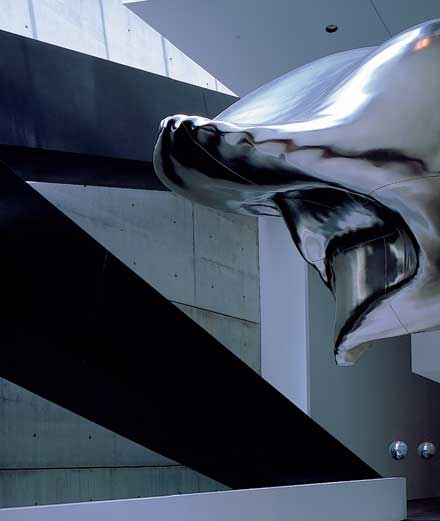From the Mobile Art pavilion for Chanel to the Maxxi in Rome, Zaha Hadid has entirely reinvented museological space, and in doing so marked the 21st-century with a unique aesthetic that is completely her own.

Numéro met up with the Anglo-Iraqi architect to look back over a decade of artistic creation in cities across the globe– from Rome to Cincinnati, from Baku to Copenhagen – and to delve into the secrets of her inimitable approach.
Numéro: When you were studying at the Architectural Association in London, you said, “I’d like to open a door to a world that has yet to be invented.” Since that time you’ve invented a whole new typology of museums…
Zaha Hadid : Back then my professors pushed me to look at and then decipher what wasn’t obvious. That made, in a way, for a sort of teaching of “new frontiers”: there had to be another world, other formal possibilities. I was obsessed with the desire to continue and complete certain Modernist projects that had ended so abruptly with the Second World War. The 1970s and 80s were marked by historicism and rationalism, and I didn’t think back then that by pursuing my research I could discover “another world.” But being able to create my own repertoire was exciting and absolutely decisive – discovering and imagining techniques, inventing new formal qualities. I was studying a new subject, one that I was constructing as I defined it.
Which museum would you say has had the most influence on you?
The New York Guggenheim has had an incredible influence on me. Frank Lloyd Wright was a visionary, and created a path that connects the museum to the exterior and defines its circulation. The route through the building, on a vertical spiral, really allows you to see the works, to contemplate them in three dimensions and to rediscover them in a completely different way. With Wright, the museum becomes continuous, the starting point for a promenade. And the Guggenheim finally escaped from those enfilades of rectangular rooms, without perspective or depth, that characterized the aristocratic palace. He experimented with light and movement, allowing for the greatest possible number of people. Exhibitions can be hung in front of everyone: the museum comes to life, like a body in motion. In a similar vein, the Heydar-Aliyev Centre [Baku, 2007–12] frees itself from the straight wall. We removed as many visual cues as possible so that you float in an optical white world.
Do you think it’s fair to say that museums are becoming ever less elitist?
Some claim that museums have become shopping malls. I think it’s a good thing that they draw in more and more people. Today the interaction between culture and public life is fundamental. What differentiates the 20th and the 21st centuries from those that preceded them is that art no longer addresses the patrons alone. It’s become accessible to everyone, and with it the museum has been enriched.
Interview by Delphine Roche
Read the full story in Numéro 164, now in stands and available in our iPad app.
Rosenthal Contemporary Arts Center of Cincinnati.


MAXXI museum, Rome, Italy.
 ArtArchitecturearchitecture interview zaha hadid museal art chanel maxxi rome museum clara le fort numero magazine50
ArtArchitecturearchitecture interview zaha hadid museal art chanel maxxi rome museum clara le fort numero magazine50